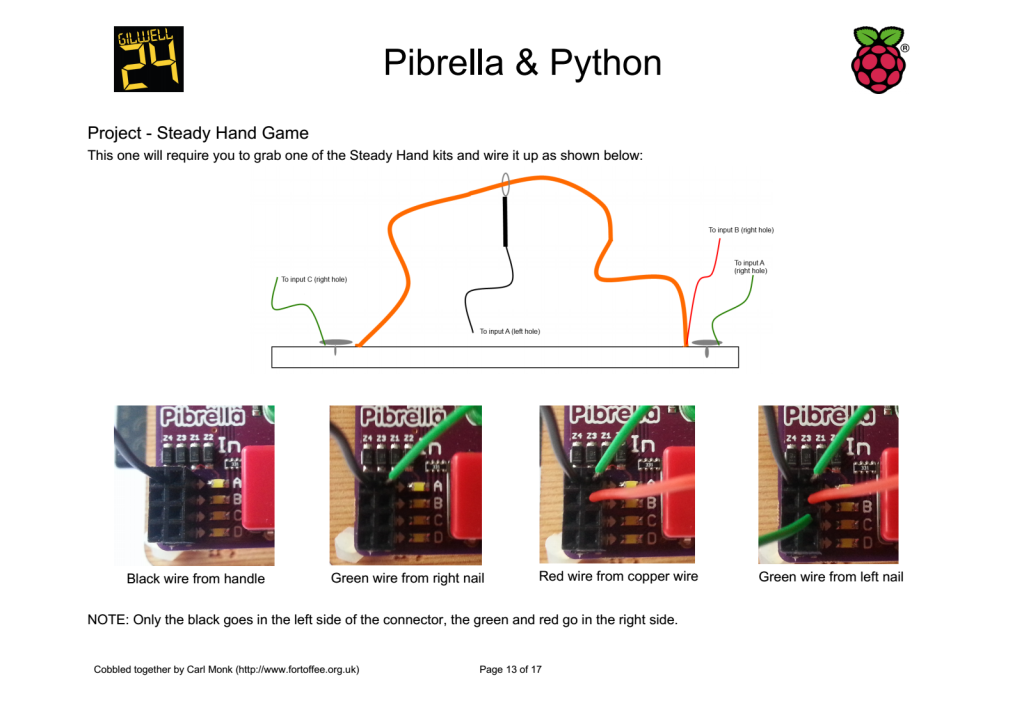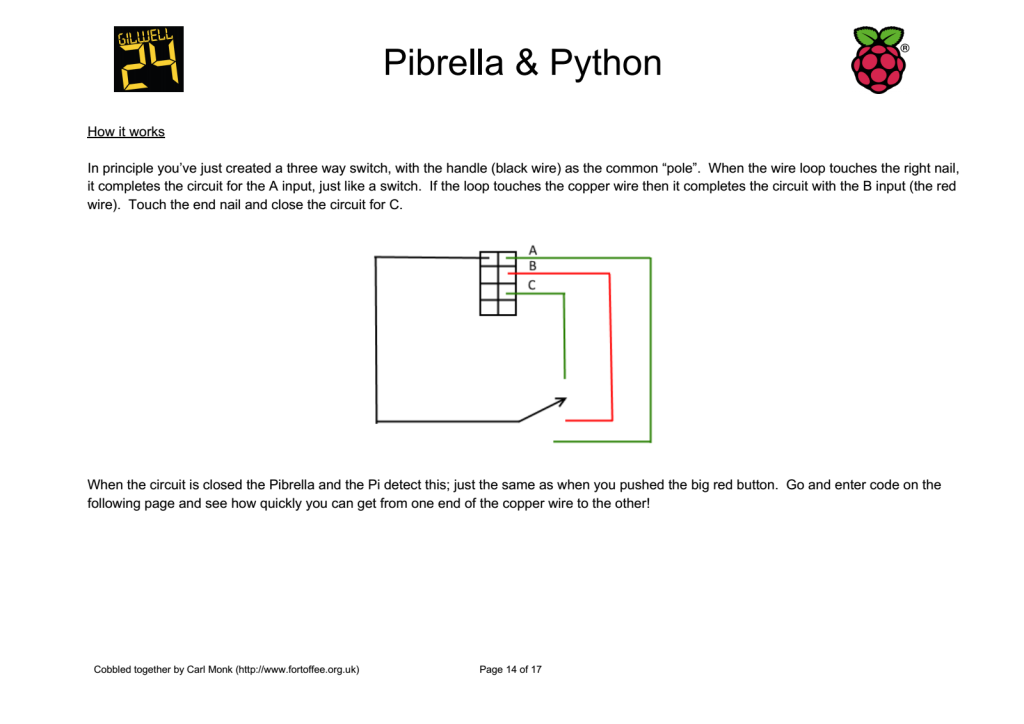I’m currently writing some Pi activity packs to use at a big Scout event on Saturday. One of them uses the excellent PiBrella to allow easily accessible physical computing via the GPIO interface.
After taking the reader/coder through the basics (lights, buzzer and the big red button!) I put together an extension task to make a Steady Hand/Live Wire game. Here’s the setup and introduction
The code they are given is shown below
1 2 3 4 5 6 7 8 9 10 11 12 13 14 15 16 17 18 19 20 21 22 23 24 25 26 27 28 29 30 31 32 33 34 35 36 37 38 39 40 41 42 43 44 45 46 47 48 | import pibrella import time state = 'end' startTime = 0 endTime = 0 touch = 0 while True: #start position touched if pibrella.input.a.read(): if state != 'reset': startTime = 0 touch = 0 state = 'reset' print 'Home and reset' #copper wire touched elif pibrella.input.b.read(): if state == 'started': print 'Touch!' touch += 1 state = 'touch' pibrella.light.on() #end position touched elif pibrella.input.c.read(): if state == 'started': endTime = time.time() state = 'end' print 'You made it in', endTime - startTime, 'seconds!' print 'You had', touch, 'touches of the wire' elif not pibrella.input.a.read(): # we've started if state == 'reset': print 'Timer started - Good luck!' state = 'started' touch = 0 startTime = time.time() # we've stopped touching the wire elif state == 'touch': state = 'started' pibrella.light.off() time.sleep(0.1) |
and that’s it. If you saw me at CamJam, the one I had there was a pimped up version. It had an LCD attached to show the fastest time and lives remaining. The buzzer on the Pibrella was also used, while the LEDs counted down your three lives. But those, dear reader, are YOUR extension tasks 🙂
One of my favourite Pibrella projects so far! Built in true maker fashion with scraps and gaffer tape! #camjam pic.twitter.com/QJU8714yPI
— Phil Howard (@Gadgetoid) July 5, 2014

